Frankel, Enable and fleeing the horrors of war: the racing books of the year
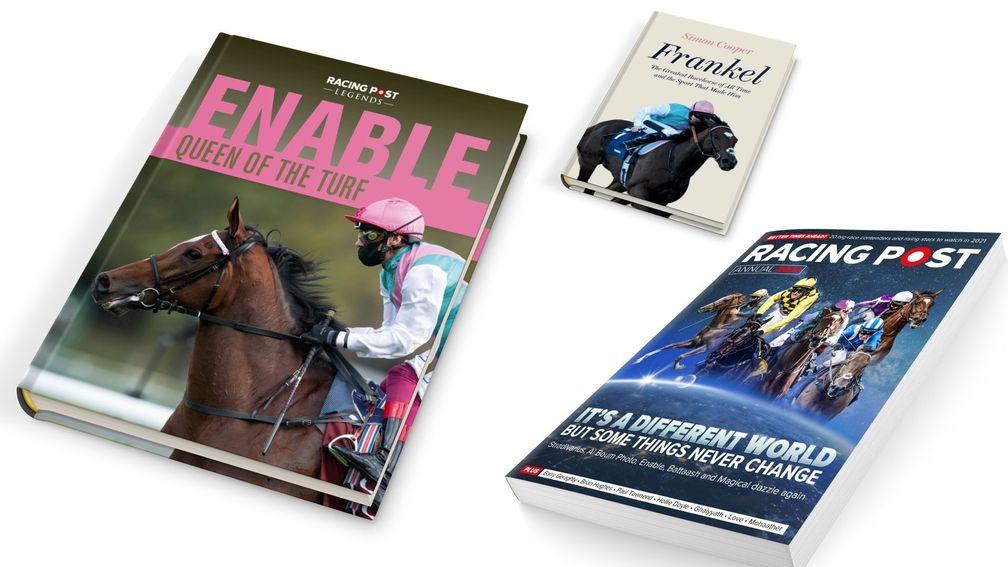
Frankel: an imaginative retelling of the legendary story
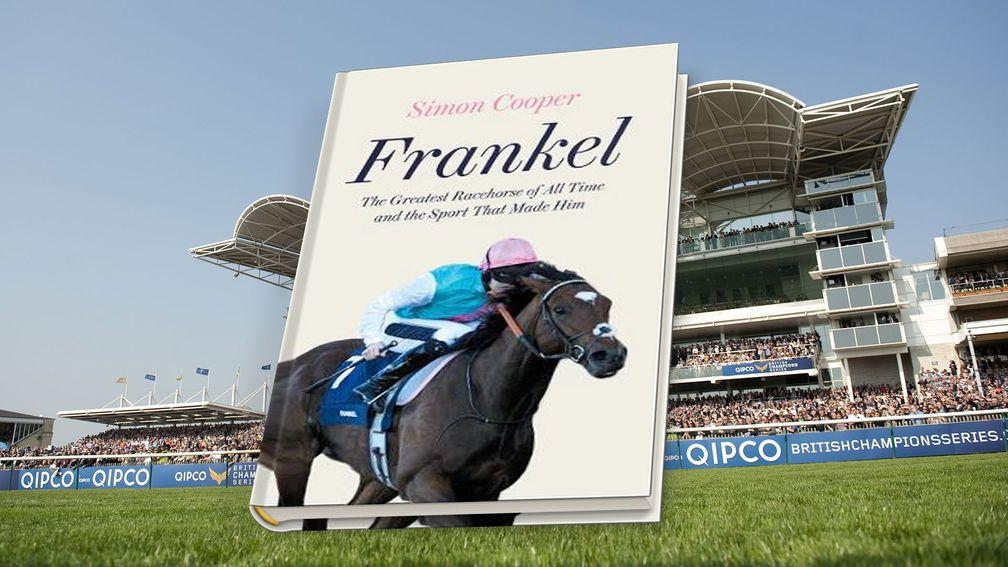
Frankel: The Greatest Racehorse of All Time and the Sport That Made Him by SimonCooper, Harper Collins, £20
By now the majority of racing fans must surely be aware of Frankel and his remarkable story. After all, he is the horse against whom all others are inevitably judged following his 14-race unbeaten career.
He became the undisputed poster boy of British racing while putting every challenger of his generation to the sword between 2010 and 2012, and he continues to add to his legacy as the sire of superstars such as the indomitable Cracksman and St Leger winner Logician.
His exploits on the track are well documented and his powerful running style was as familiar to us as Roger Federer's backhand or Jonny Wilkinson's conversions. With this in mind, the onus was very much on Simon Cooper to provide a fresh perspective in this book.
It was a tall order for anybody but the author rises to the challenge by focusing on the first-hand stories and small details behind the legend of the horse, which is mostly concerned with his invincibility.
Cooper paints a complete picture of Frankel, charting his meteoric rise from the first years of his life through to his glorious send-off when winning the Champion Stakes at Ascot.
This takes the form of a pilgrimage. The author visits the studs and tracks that staged Frankel's story, transporting the reader with his vivid descriptions, such as the "dusty-pink mock Tudor, faux Elizabethan house" that was once home to Sir Henry Cecil.
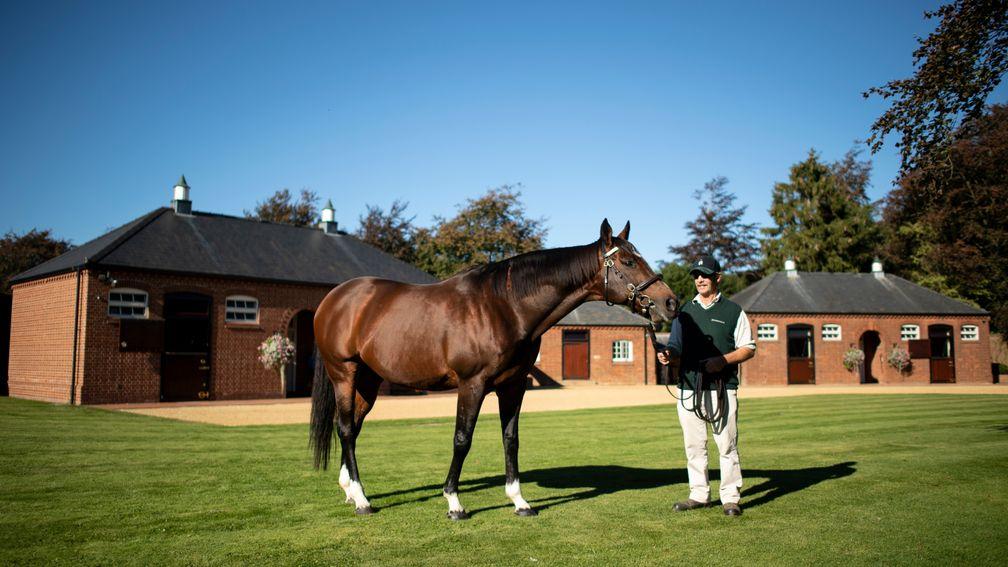
He sprinkles the narrative with stories of Frankel's legendary trainer, his jockey Tom Queally, who was on board for every race, the grooms who learned to cope with his explosive nature and his owner Khalid Abdullah, who thankfully kept him in training for three years.
After a brief prologue, the book begins with Cooper visiting Frankel at Banstead Manor Stud. He writes that he tried not to elevate it to a semi-religious experience, adding that it would be "the wrong side of sane" to equate meeting a racehorse to an audience with the Pope.
Whether he manages this is a matter for debate. Cooper conveys an obvious affection for Frankel and he dwells on the smallest details of their meeting, such as his fear that just patting him on the neck seemed a "small and fleeting gesture" when greeting a true great.
This visit provides a useful starting point for his account of Frankel's early life and he carefully guides us through the often testing maze of bloodstock and all of its associated jargon as we learn about the histories of Juddmonte, Coolmore and the super sire Galileo.
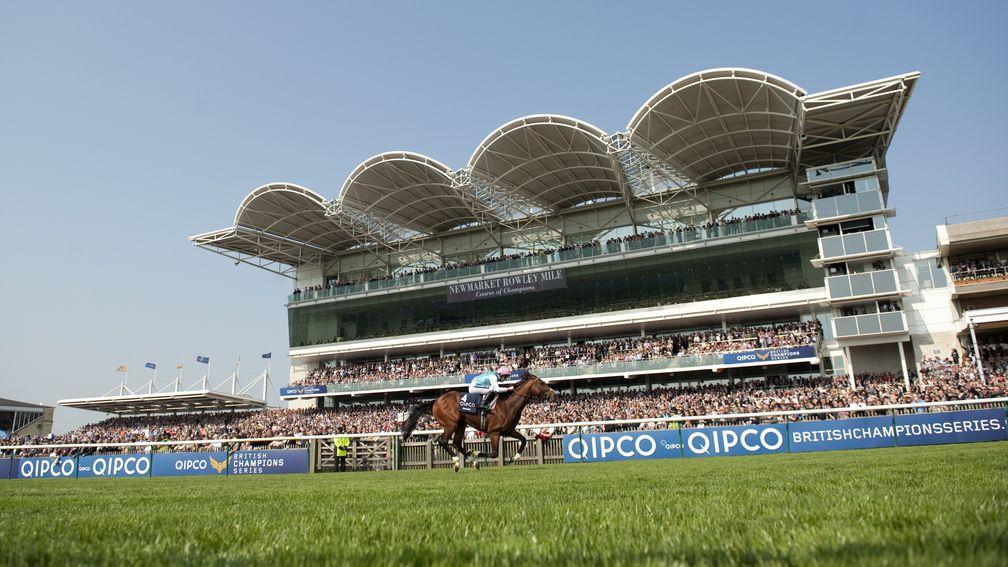
The story moves seamlessly to Frankel's arrival at Cecil's Warren Place in January 2010 and the author introduces his groom Sandeep Gauravaram, or Sandy, who may have looked after a handicapper had Cecil not told him to wait for "the pick of the Prince's arrivals".
Cooper captures the early excitement surrounding the son of Galileo and juxtaposes it with the relative mundanity of his first start at a Newmarket meeting he describes as one of those "humdrum, unregarded workaday fixtures" that shape the racing calendar.
His writing is original, and his comparison between Queally discovering Frankel had several gears during his second start and Marty McFly hitting the afterburners of the time-travelling DeLorean in Back To The Future just because he can deserves special praise.
Racing fans are a famously nostalgic bunch and fortunately all of Frankel's greatest hits are covered, with his scarcely believable success in the 2,000 Guineas and his famous Duel on the Downs with Canford Cliffs rightly afforded their own chapters by Cooper.
While he is undeniably the star of the show, this book is about so much more than just Frankel and its author succeeds in producing an intimate portrait of his trainer and his battle with cancer. This is exemplified by his passage on Frankel's penultimate win at York.
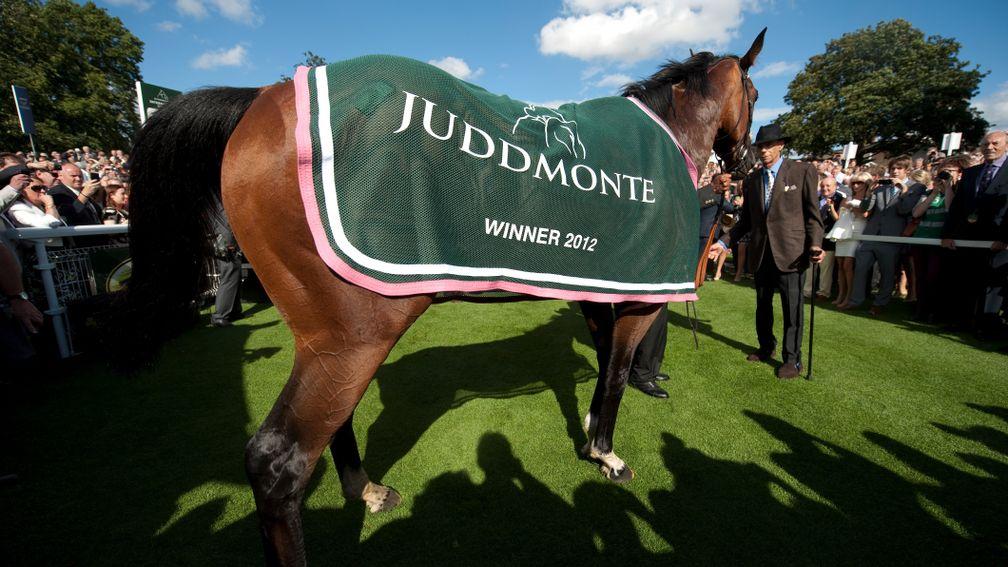
Cooper captures the crowd's affection as Cecil stood with his pride and joy in the winner's enclosure: "The full-throated appreciation adds a sort of poignancy. Everyone knows the sands of time are running out for both, in different ways and to different places."
It was a moment that went down in racing folklore, but the best thing about this book is the space reserved for less fabled moments, such as the journey back from York, when Cecil and head lass Dee Deacon stopped at a Little Chef to reflect on their achievement over a cup of tea and watch the sunset from the comfort of a concrete bench.
An emotional journey comes to an end with another visit to Banstead Manor and the author telling Frankel he was grateful to have known him. Thanks to Cooper, and his dedication to colouring in the blanks in this famous story, we can now know Frankel a little better too.
Jonathan Harding
Enable: remembering the greatest mare of her generation
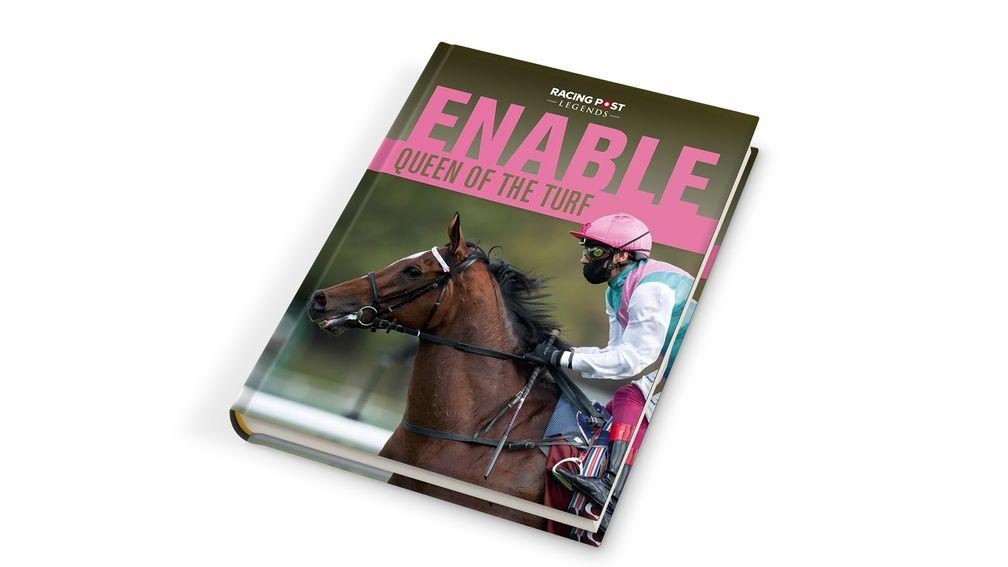
Enable: Queen of the Turf by Andrew Pennington, available to buy here for £19.99
On a wet October day in Paris, Enable made her final ever appearance as a racehorse.
The six-year-old wondermare brought her glittering career to an end having won 15 of her 19 starts, including 11 at the top level. Enable was truly a horse of a lifetime, and perhaps the greatest mare of this generation.
While her days at the racecourse may be over, this Racing Post-produced book – Enable: Queen of the Turf – allows you to relive every crucial part of what was truly a magical career.
The book is edited by Andrew Pennington, who does a marvellous job at piecing together all the essential moments of Enable's career.
From her early days as a two-year-old, the journey of Enable begins with her debut on the all-weather at Newcastle in November 2016. From there we build up to her quest to win the Oaks for John Gosden, featuring expert insight and analysis from the time by Racing Post Ratings experts.
What follows, as we all know, was history in the making. Every Classic, every Group 1, every King George and every Prix de l'Arc de Triomphe is perfectly documented through clippings of various Racing Post articles from years gone by, all setting the scene perfectly for every race. Featuring the words of many esteemed writers, including Lee Mottershead, Alastair Down, Tom Kerr and Jonathan Harding, you get the feeling that you are truly reliving the build-up and fallout for each of Enable's conquests.
But it is not only the words that take you back to those glorious days. The book is beautifully decorated with pristine photographs taken by Edward Whitaker, including those which illustrate perfectly just how much this loveable mare means to John Gosden, Frankie Dettori and groom Imran Shahwani.
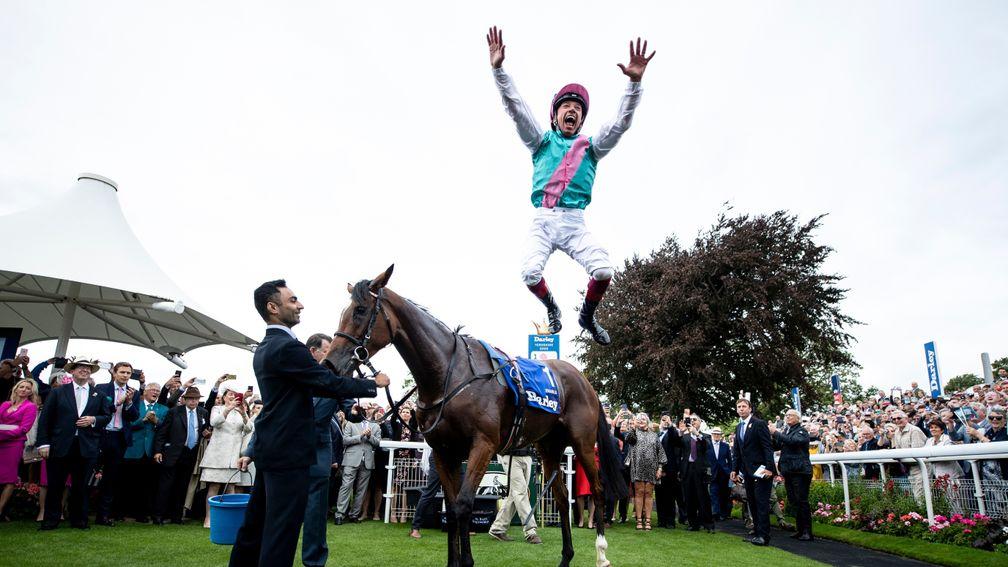
And it isn't just those images which tell you how much they adored her.
Throughout the book there are contemporary features, interviews and news items with those who knew Enable best, providing insight into how connections felt before each big race, and their elation or despair after it.
That is perhaps depicted no better than by Frankie Dettori after he guided Enable to victory ahead of Crystal Ocean in the 2019 King George in a race for the ages. The jockey said: "She's an amazing horse in every way: her ability, her courage, how uncomplicated she is. I don't know what to say, I love her. She gives me emotions that no other horse has ever given to me in my life."
These sorts of wonderful moments all contribute to how special Enable was to so many people, and do nothing but fill the heart with joy and wholesomeness upon revisiting them.
Featuring a foreword from ex-jockey and racing journalist Brough Scott to really set the mood, it all adds up to a wonderful job at immortalising this remarkable story of the most special mare of this era.
Andrew Wilsher
'Many books have been written about famous horses – but none like this'
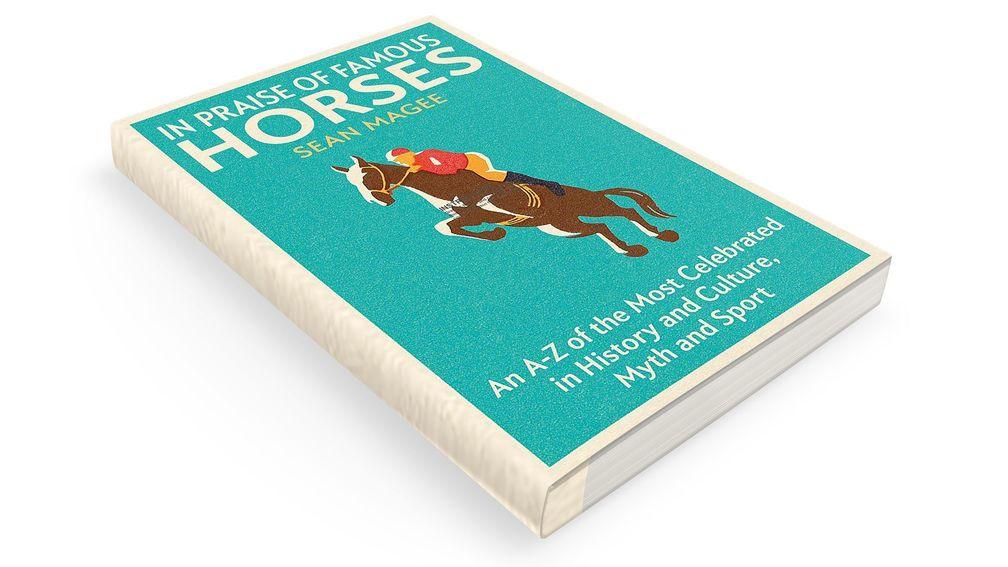
In Praise of Famous Horses: An A-Z of the Most Celebrated in History and Culture, Myth and Sport by Sean Magee, published by Weidenfeld & Nicolson, £16.99 (hardback), £8.99 (ebook), £19.99 (audio)
If you visit Deene Park in Northamptonshire you will be able to see Ronald's head. It's stuffed and sits in a glass case. Ronald was, perhaps for the best, a horse rather than a human, and a notable one.
In 1854, during the Crimean War's Battle of Balaclava, Ronald carried the 7th Earl of Cardigan at the head of the Charge of the Light Brigade. Ronald and Cardigan were lucky to survive the carnage, allowing Ronald to enjoy a leisurely retirement at Cardigan's Deene Park estate and to live long enough to lead the Earl's funeral procession in 1868.
Sean Magee's latest book is awash with such nuggets and, although champion racehorses are given due attention, so too are horses famous or infamous for many other reasons. Magee signals pleasures to come when, in the preface, he explains: "From DH Lawrence's horse Aaron, whose hide was posthumously recycled as a duffel bag, to Zippy Chippy, fabled American loser who became a national celebrity, each of the horses featured in this book has a claim to fame."
The author's love of horses and of the tales they have created illuminates this idiosyncratic, distinctly personal collection. Readers, of whom there deserve to be many, will have a lot of pleasures to choose from.
In the Bs alone there is Boxer, the loyal, hard-working giant carthorse in George Orwell's Animal Farm, and Burmese, who carried the Queen at the Trooping of the Colour ceremony from 1969 to 1986.
If you didn't know already that for many years from 1989 the rearing black horse that was the symbol of Lloyds Bank was Cancara, or that Copenhagen, having carried the Duke of Wellington for a 17-hour day at the Battle of Waterloo, welcomed his dismount by aiming a fierce kick at the conquering Duke's head – then you will know after reading the Cs.
The choice is wide, horses real and imagined, able and unable, among the latter Rossa Prince and Mister Chippendale, who, with the help of their point-to-point riders, managed to lose walkovers. It was proof that horses are capable, or incapable, of almost anything, as also their riders.
The competition for the right to be acknowledged as the worst racehorse of all is a fierce one. Candidates such as Quixall Crossett and Zippy Chippy are duly included, but even their dire records (respectively, 0 wins from 103 appearances between 1990 and 2001, and 0 wins from 100 appearances in the US between 1994 and 2004) lose lustre when compared with Elsich.
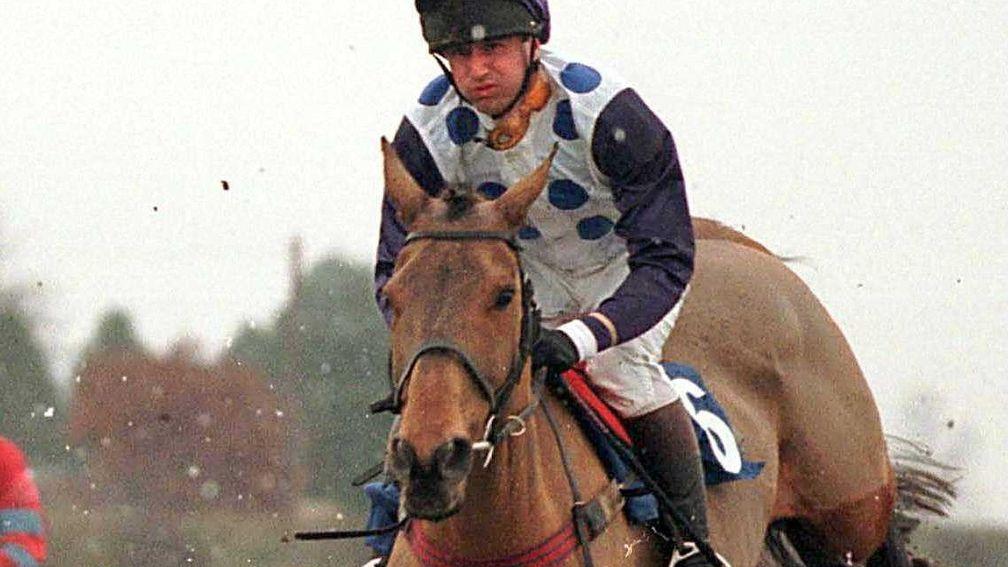
"The Arkle of awfulness," as Magee describes him, twice managed to fall twice in the same race. Unraced until a nine-year-old, in 1945, Elsich made up for lost time by running twice on the first raceday of his life, and falling in both races.
Falling was second nature to Elsich, but he did sometimes complete the course and on two successive, glorious days at Ludlow, finished second and third – a distant second of two and distant third of three.
Eventually the authorities refused to let him carry on, Elsich himself having refused on his latest appearance. He could not match some others for the number of successive defeats, boasting a record of only 0 from 50, but they did include 23 falls, five pulled-ups, and three ran-outs or refusals. He earned a grand total of £35 in prize-money. Thankfully, it would not be allowed today.
Many books have been written about famous horses but none like this; a well-informed, enthusiastic, engagingly written and unusually wide-ranging work. It was written to celebrate horses famous for whatever reason and it succeeds wonderfully well.
David Ashforth
On Swift Horses: a compelling tale of racing, risk and reward
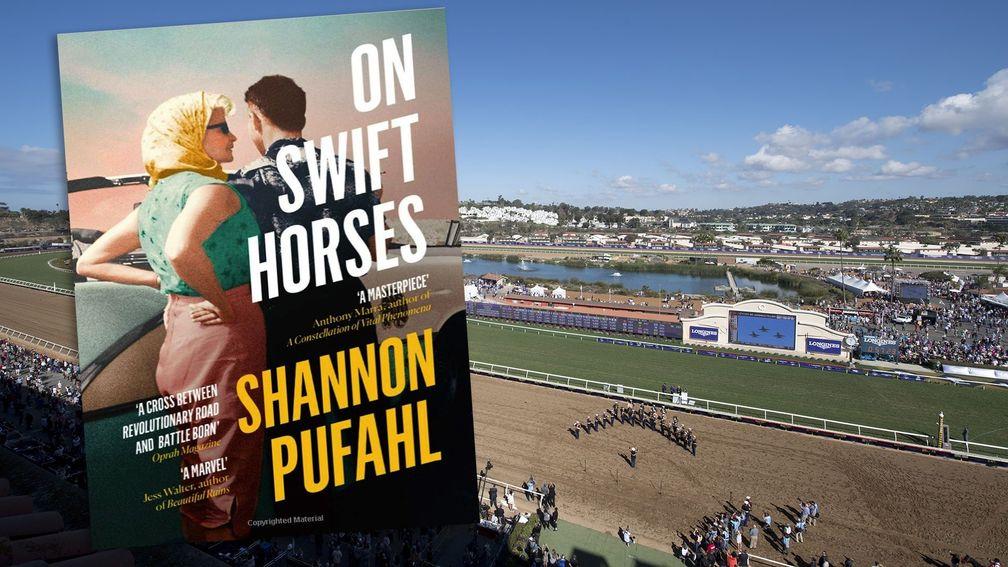
On Swift Horses by Shannon Pufahl
Published by Fourth Estate, £8.99
Bruce Springsteen warned against being caught on the wrong side of the line between winning and losing in his song Atlantic City and this novel tells a similar story of two people desperate to find their place in the world as they walk the tightrope between love and luck.
On Swift Horses is a powerful debut effort by Shannon Pufahl, who charts the divergent and dangerous journeys of a lonely newlywed and her brother-in-law through the post-war American West, a land that promises everything in the middle of its own reinvention.
After leaving her hometown in Kansas for the bright lights of San Diego, Muriel becomes restless, and slowly but surely the walls of her dusty bungalow begin to close around her as she feels trapped by the suburban life her new husband Lee has planned for them.
She finds escape in racing and begins slipping off to Del Mar to bet and eavesdrop, learning the language of the sport from the retired horsemen who hold court on upcoming races as they frequent the Heyday Lounge where she works. Muriel soon embraces the exhilarating taboos of gambling and being caught alone at the track.
She learns the names of stables, jockeys and colts gone early to stud, with each new detail appearing as a "familiar shape in a dark room". The horses are a metaphor for her quest for individualism. They are indistinguishable in the stalls but as the races develop before her the runners become recognisable, cast in their own unique light.
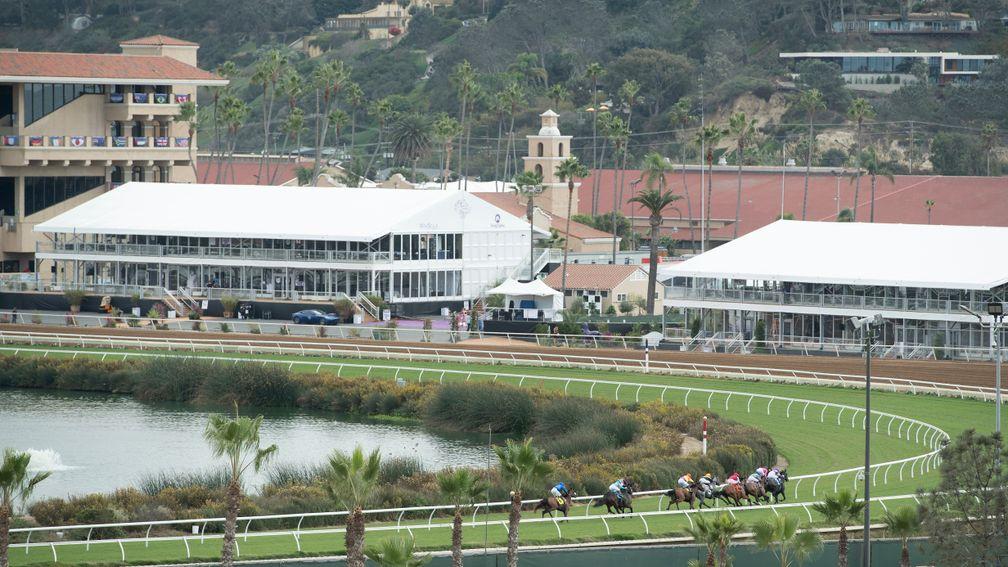
It is her first experiment in risk and a pivotal stop on a road to self-determination that moves irrevocably away from the life expected of her as she takes a high-stakes gamble on love. To win, Muriel must strike the delicate balance between illicit desire and restraint.
Her wayward route to happiness is mirrored by the story of her sly, itinerant brother-in-law Julius, who has far more freedom and always made the world feel bigger than she had imagined.
He takes a similar gamble while working at a casino in Las Vegas, where tourists gather on the rooftop to watch atomic tests, and he falls head over heels for Henry, a card cheat. Julius shows his hand against his better judgement but a bomb quickly shatters their domestic bliss when his lover is discovered and run out of town.
It sets him off down a perilous path searching for Henry in the plazas and dives of Tijuana. He trades one city of dangerous illusions and desires for another and the result is at times haunting.
This novel's beauty relies on the author's decision not to holler its most pressing themes like an old-fashioned newsboy. Instead, her declarations on the right to pursue love regardless of its form are meaningfully revealed through the small lives of the main characters.
Their choice to follow the road less travelled is understated, told gracefully with considered prose and subtle imagery. The result is an unpredictable story less about empowerment than the beauty of defenceless characters, as they open themselves up to life-altering risks.
Jonathan Harding
A jaw-dropping journey from the horrors of war to leading up Royal Ascot runners
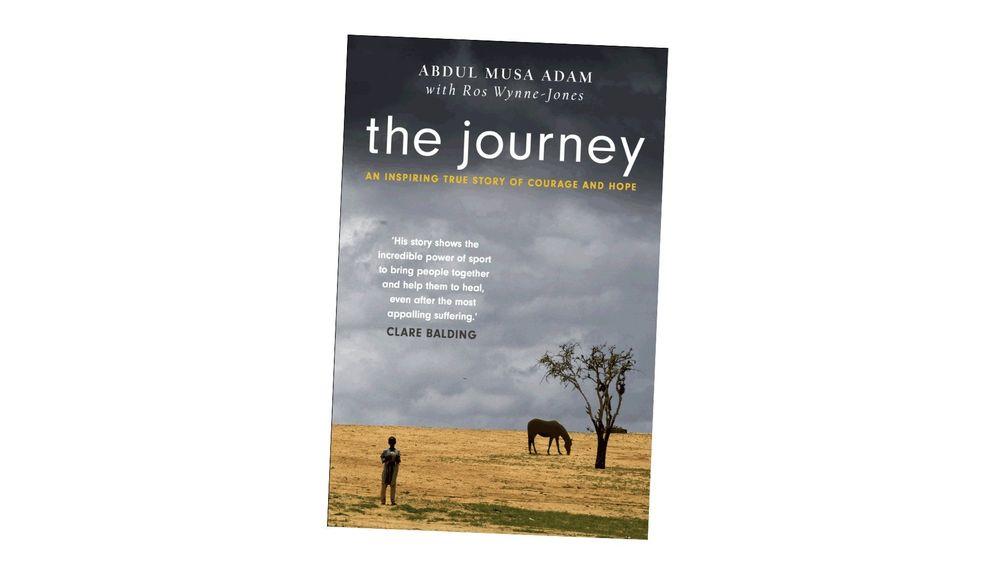
The Journey: An Inspiring True Story of Courage and Hope by Abdul Musa Adam with Ros Wynne-Jones, published by Mirror Books, £8.99
Picking through burnt rags of clothing once belonging to his friends and family, Abdul Musa Adam was staring into an abyss.
War robbed him of everything he had ever known. His childhood, his freedom and his way of life evaporated after a government-led genocide in Darfur swept through the lands he once called home.
Almost all his family and friends died as a result of the conflict, which UN statistics suggest has cost 300,000 lives and led to the displacement of up to three million people.
How, then, could a boy put through such unimaginable anguish one day find himself surrounded by the pomp and circumstance of Royal Ascot?
The Journey is Abdul's personal account of his story and is as much a testament to his powers of endurance as it is a window to the hardship of life as a refugee fleeing conflict in Africa.
From Darfur to Chad, then on to Libya and across the Mediterranean to Marseille, Paris, Calais and eventually England, the tale is tear-jerking and, at times, jaw-dropping.
The heartaches as those who represent Abdul's last link to home are torn away in horrific circumstances and his fear is palpable as he stows away on a lorry in a desperate attempt to reach what he hopes will be a better life in England.
The full details of this extraordinary story cannot be captured here. It really does need to be read to be fully comprehended.
Despite such turmoil there was always one constant for Abdul, something to take him back to his happy childhood playing on the vast grazing lands and watering holes of Darfur. A love of horses.
He recounts a tale of his father lifting him on to the back of a small pony when he was a tiny boy. Abdul speaks of having no fear, instead feeling at home as the pony breaks into a run.
It has the scent of a 'eureka' moment, a realisation that he has been bequeathed with the gift of horsemanship. This talent begins to be fully realised only after a visit to the Greatwood charity near Marlborough, Wiltshire, which uses retired racehorses to help young people facing difficulties.
Abdul goes on to work for Nikki Evans in Abergavenny, attends the National Horseracing College in Doncaster before progressing to a full-time job as a stable lad with Andrew Balding at Park House Stables in Kingsclere.
He led out Shadn before her run in the Commonwealth Cup at Royal Ascot this year. A war zone replaced by pristine turf, Kalashnikovs by top hats. Yet on reading, it becomes clear Abdul never forgets where he has come from and his experiences continue to have a profound impact on his new life.
While this story appears to have a happy ending, it is also one tinged with great sadness. The loss of his brother, Yusuf, gnaws at Abdul every minute of the day. Is he alive? Is he dead? Is he still in the camp in Chad where he and Abdul parted ways over a decade ago?
This creates a life of uncertainty, where Abdul is trapped by a strange mix of hope and fear as he continues his search for Yusuf.
"I don't have a choice, I have to find him," Abdul says on a trip to the infamous Jungle migrant camp in Calais. "Until I find him, I will never be happy and I will never be safe. Every day that I am in a warm bed and Yusuf is out in the cold and rain somewhere, I too feel I am in the cold and rain."
One can only hope his search is successful and that racing continues to provide a haven for a young man who appears to have found some semblance of peace out of the chaos that once surrounded him.
Tom Ward
What a year – from the Cheltenham Festival to Covid to Classics
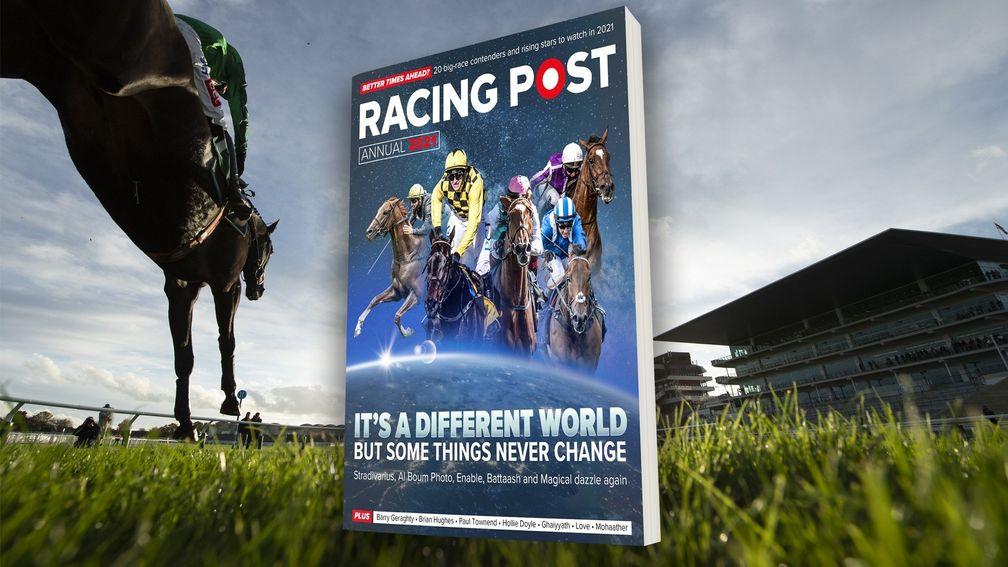
Racing Post Annual 2021, available to buy here for £14.99
Completely different yet somehow strangely the same – that is how 2020 has been for us all due to the coronavirus pandemic, and it is also the theme that runs through the latest Racing Post Annual.
This is the tenth outing for the comprehensive end-of-year package, but no-one would have imagined at the start of this year some of the subjects that are touched upon by racing's top writers.
Punctuated throughout by wonderful images from the likes of award-winning photographers Edward Whitaker and Patrick McCann, the Racing Post Annual is a must for anyone who not only wants to delve deep into the sport they love but also remember, for better or worse, the strangest year surely any of us have ever experienced.
Editor Nick Pulford touches on the big picture in his opening to the Annual when he says: "It has to be acknowledged that there are more serious things than sport. Yet it is also true that racing is an important business and it plays a vital part in the lives of millions as a form of entertainment and escapism. That, too, has been brought home to us in clear terms this year."
Despite much of the sport happening without us there to see it on course, 2020 has been yet another remarkable year of equine and human achievements, rolled in with stories of triumph and sorrow, and with much more for us to look forward to in the years ahead.
The feats achieved by the likes of dual Classic winner Love, the supreme stayer Stradivarius, the electric Battaash and the mighty Al Boum Photo – whose second Cheltenham Gold Cup success is beautifully illustrated with thronging crowds that seem so alien to us only a matter of months later – are brought back to life in extended and eloquent essays by a parade of Racing Post writers.
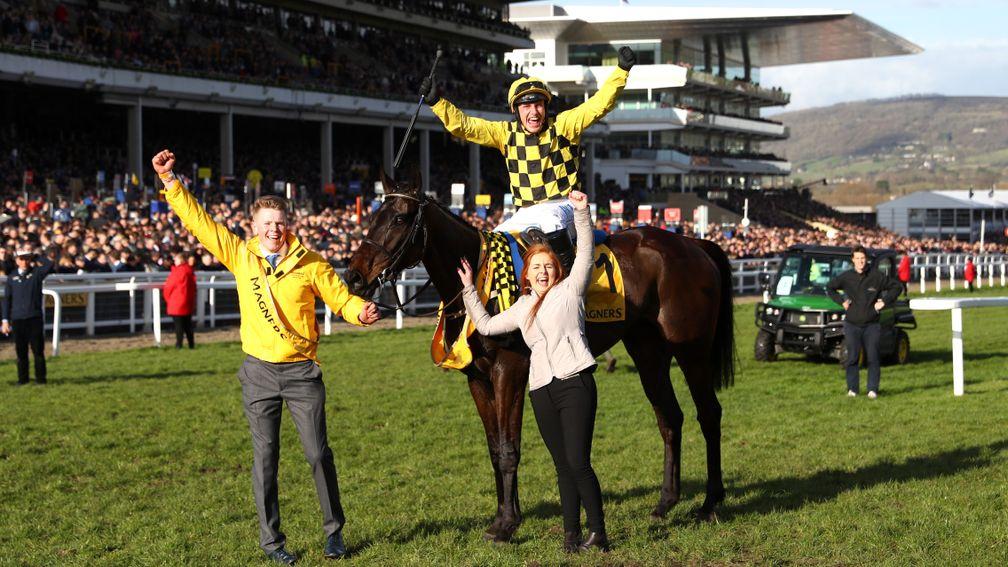
As just one example, here is Lee Mottershead on the heartwarming day a 12-year-old Faugheen won a Grade 1 novice chase at Leopardstown last winter: "With Faugheen against the far rail and Easy Game close to the stands' rail, they committed to a duel that sent the decibel levels soaring. No more than half a length separated them at the line. Faugheen passed it in front. People cheered. People sprinted to the winner's enclosure. People sprinted and cheered at the same time. It was absolutely marvellous."
The stellar achievements of jockeys Tom Marquand, Hollie Doyle, Jim Crowley, Brian Hughes and Paul Townend are also visited on the journey through 2020, while Richard Forristal reflects on the legendary Barry Geraghty, who bowed out of the saddle in July after a final blaze of glory at Cheltenham.
The craziness, chaos and uncertainty caused by Covid-19 also features, as you would expect, in a series of fascinating snapshots charting a most unusual period in the history of British and Irish racing.
Mottershead sums up the ongoing impact of the coronavirus on the sport when he says: "As these words are written it is impossible for us to predict what happens next. Those of us at Cheltenham in March felt horribly uncertain about the future. The feeling continues to this day."
None of us can be certain what 2021 and beyond will bring us. However, despite all the upheaval and changes of this year, it is one that has been marked by a familiarity in the racing world that offers reassurance for the future. With the Racing Post Annual, you can enjoy again what this wonderful sport has to offer us all.
Peter Scargill
A great book for older readers – and those who love their nostalgia
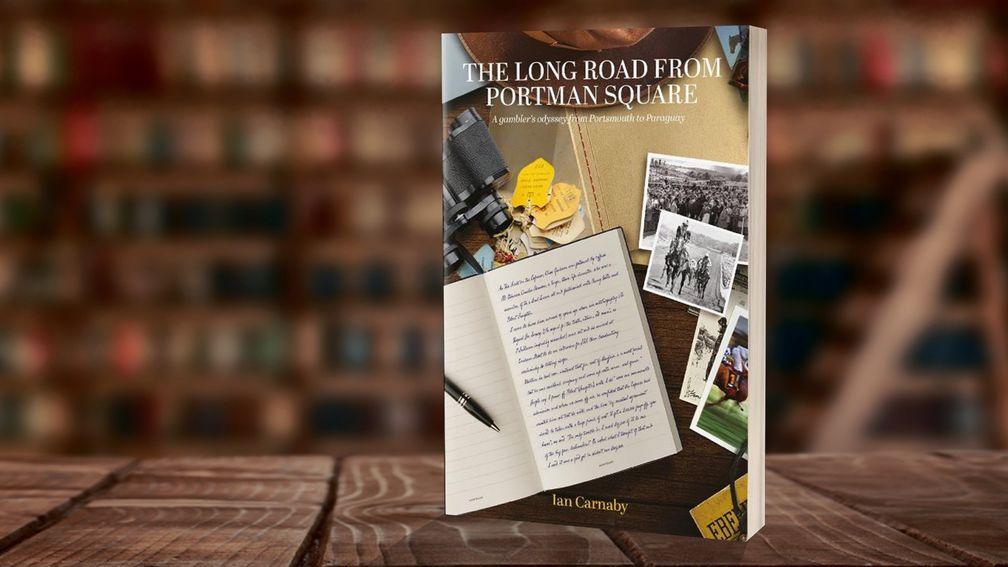
The Long Road From Portman Square: A Gambler's Odyssey From Portsmouth To Paraguay by Ian Carnaby
Published by Marten Julian, £20
"Of course, you need somewhere to prepare and somewhere to celebrate."
An admirable policy for any travelling gambler and, in a nutshell, the setting for numerous amusing anecdotes from Ian Carnaby in The Long Road From Portman Square, which belatedly follows his 2004 memoir Not Minding That It Hurts: The Observations Of A Chancer.
His latest book is predominantly a collection of his entertaining columns from newspapers and magazines over the last 30 years, many from the Racing Post, grouped into common-themed sections and introduced with fresh reflections.
Carnaby, the long-serving British correspondent for The Irish Field until retiring last year, has lived a rich, wide and varied life, and his writing is highly relatable, such as the section where he recalls his mother's "holy grail" system of backing horses with recent form figures of 020.
He is at his best in an amusing yet poignant column entitled "Taking A Chance And Making It Pay", in which he embraces the risks of taking certain routes on London's roads when in a rush to transport a friend to a train station.
It is the sign of a fine writer that the reader is well aware they have been set up for a punchline but it still hits them unawares, which Carnaby does frequently.
This book is very well suited to older readers, especially with the frequent film references, but any fan of the sport can tap into the racing nostalgia and I frequently found myself yearning for a return to pre-Covid times, with a pint and the Post in the pub.
In one of Carnaby's regular haunts there is a sign which says: "Not All Who Wander Are Lost", from a poem by JRR Tolkien. Carnaby writes that the sign "pleases flâneurs everywhere, especially this one". Flânerie is described as an art in Paris, like "a mobile and passionate photograph" (Victor Fournel), and Carnaby has eloquently and humourously transferred the pictures of his life into similarly colourful text.
In a Sporting Life column from December 1994, Carnaby is on a coach to Leopardstown and glances up from his Sunday paper to see a lime-green train. He writes "one day I shall ride on the lime-green train and find out where it ends up".
We never find out if he did, but it was plenty of fun to accompany Carnaby on the rest of his ride.
Ben Hutton
These reviews are exclusive to Members' Club Ultimate subscribers. Members can read more great content here:
'I had a lot of money on Frankel that night - I just couldn't see him beaten'
'You notice the bets, see they're linked and soon work out it's Barney Curley'
Mick Easterby: 'I sold my false teeth and got £120. I'm a legend, you see'
'It's nice to be popular. It's better than having stones thrown at me, anyway'
Unique challenges overcome in a year of brilliance and bafflement
Magic moments: top Post writers on their favourite races from a great season
Nick Luck: 'I said then I could die a happy man. And weeks later I nearly did'
Mark Johnston: 'But for Charlie, I might think it was time to pack up and run'
Need help with any aspect of racingpost.com? Visit this page
Published on 13 December 2020inFeatures
Last updated 19:25, 13 December 2020
- Government says it is working 'at pace' to have white paper measures in force by the summer
- 'The only thing you can do is lie fallow and regroup' - Meades to return with scaled-back operation following blank period
- The Gambling Commission has launched its new corporate strategy - but what are the key points?
- 'It was tragic it happened to Paddy but it was a good thing for the jockeys who followed - good came out of bad'
- Acquisitions, exits and retail resilience - what we learned from Flutter and 888's results
- Government says it is working 'at pace' to have white paper measures in force by the summer
- 'The only thing you can do is lie fallow and regroup' - Meades to return with scaled-back operation following blank period
- The Gambling Commission has launched its new corporate strategy - but what are the key points?
- 'It was tragic it happened to Paddy but it was a good thing for the jockeys who followed - good came out of bad'
- Acquisitions, exits and retail resilience - what we learned from Flutter and 888's results